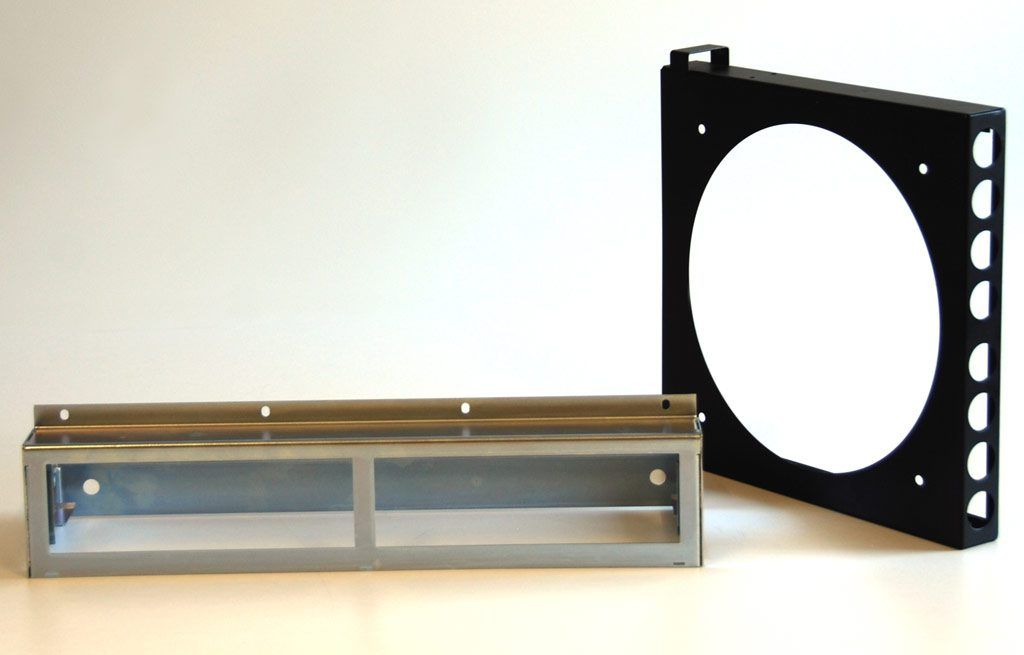- www.beissermetall.de / Home / Sheet metal processing / Surfaces
Surfaces
From wire nets to whole metal plates, from fences and protective grills to screen baskets and filter elements, from stainless steel to completely different materials for every application there is an ideal surface treatment. We at BEISSERMETALL know all about the various options and their advantages, and we advise customers and have the expertise to achieve perfect results.

Our sheet metal processing offers the following surfaces:
Pickling of metal surfaces is done primarily using acids or salt solutions. Chemicals are used to etch the surface. The process is used primarily to remove metal layers which have been placed over an underlying metal. It is also used to achieve fully oxide-free surfaces. The action of the chemicals is sometimes accelerated using electrolysis.
Electropolishing is an electrochemical process used to create highly-polished metal surfaces. The process is most commonly used for stainless steel, primarily chrome and chrome-nickel steels. This type of surface treatment removes even the smallest and almost invisible bumps and marks. The smooth surface is not only highly eye-catching, but the steel is also made more resistant to corrosion.
There are various steel treatments that we are able to offer at BEISSERMETALL, depending on the task, the material and the desired effect. Classic sandblasting or blasting with corundum for example are used to roughly clean a surface. The use of such blasting processes results, however, in a more rough surface although this appearance may be desirable. The situation is different when glass beads are used for blasting. This produces residual stress in the object due to deformation, giving more stability. Also, if very small beads are used a polishing effect can be achieved, giving an attractive smooth surface.
In contrast to hot-dip galvanising, electrogalvanising does not involve dipping the object in hot molten zinc but rather in a zinc electrolyte. The object is at the same time polarised as a cathode, so that the zinc particles are attracted from the solution to the object. This process allows a very efficient, thin and even application of a zinc coating, which results in an almost perfectly smooth surface. Therefore, electrogalvanisation is often used for sheets which will go on to be powder coated.
When a solid zinc coating is needed, this is provided by classic hot-dip galvanisation. Here, the steel object is dipped in 450C liquid zinc, which remains attached to it. The advantage of this process over electro-galvanisation is the speed and simplicity of the method. In addition, existing open pores and uneven areas are smoothed over. However, the zinc coating is significantly less even, and due to the thickness significantly more zinc is used. Hot-dip galvanisation is thus not suitable for all uses, especially as the high temperature is not acceptable for use with all materials.
In contrast to powder coating as a method of painting, wet coating is also possible with non-conductive materials. However, the process is significantly more time-consuming and thus more expensive overall. Therefore, it is not so often used at BEISSERMETALL as a metal surface treatment. However, the procedure is to be recommended when it is known when the paint is applied that it will need to be removed after a certain period. Here wet coating has a clear advantage over powder coating, as the layer applied can be much more easily removed from the object, without leaving any residue.
Powder coating is a commonly-used procedure in treating metal surfaces. A thermoset plastic powder, which is available in almost all RAL colours and is applied to the object electrostatically, where it sticks as a thin powder. After this step, the object is placed in an oven at approximately 180C. At this temperature the plastic powder melts to give an homogeneous coating, which is highly resistant to impacts and scratching.
As the name suggests, this process is based on a combination of different surface treatments, with corresponding results. In terms of corrosion protection, quality, cost and environmental factors cathodic dip-coating is hard to beat, as it provides a coating which guarantees effective long-term protection against corrosion combined with protection against stone chipping and bad weather conditions, and even saltwater.
